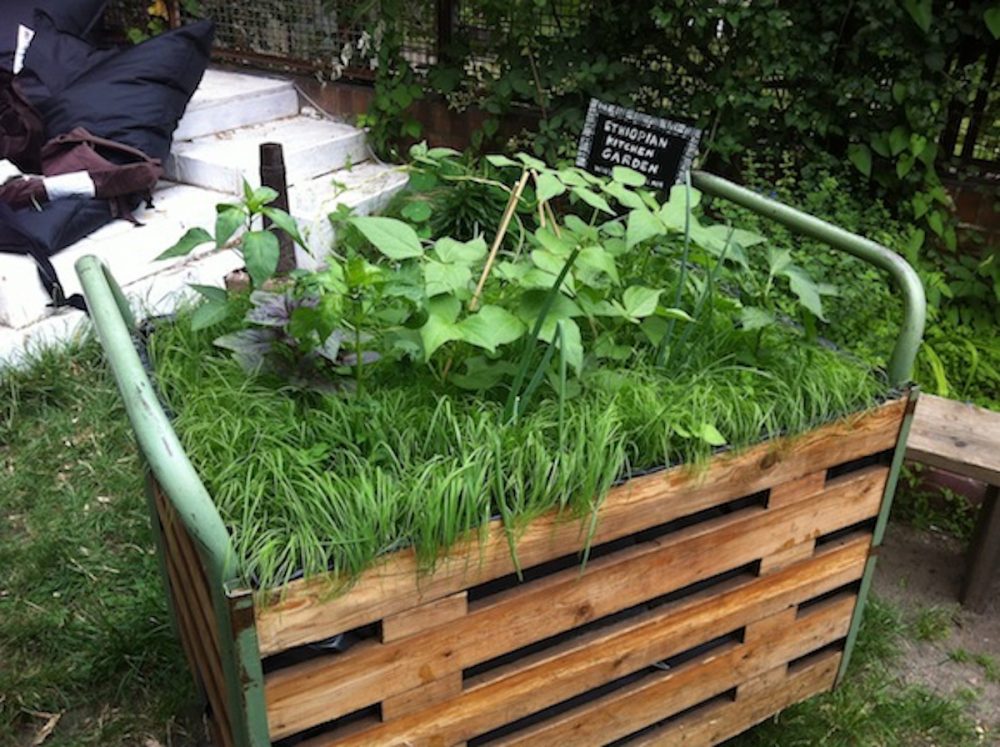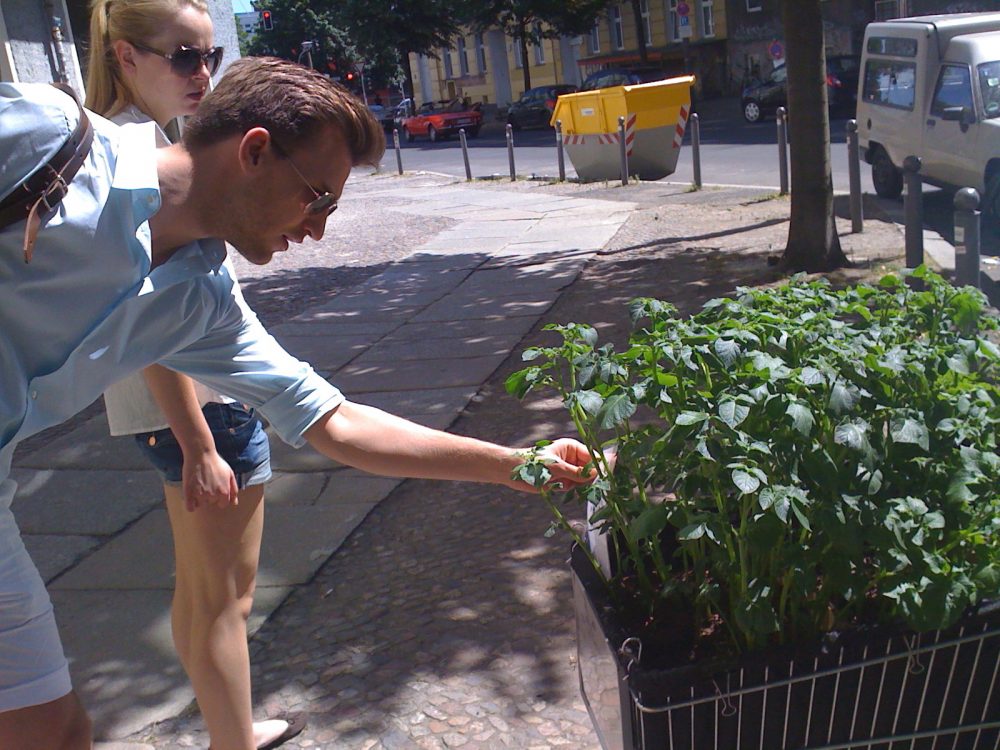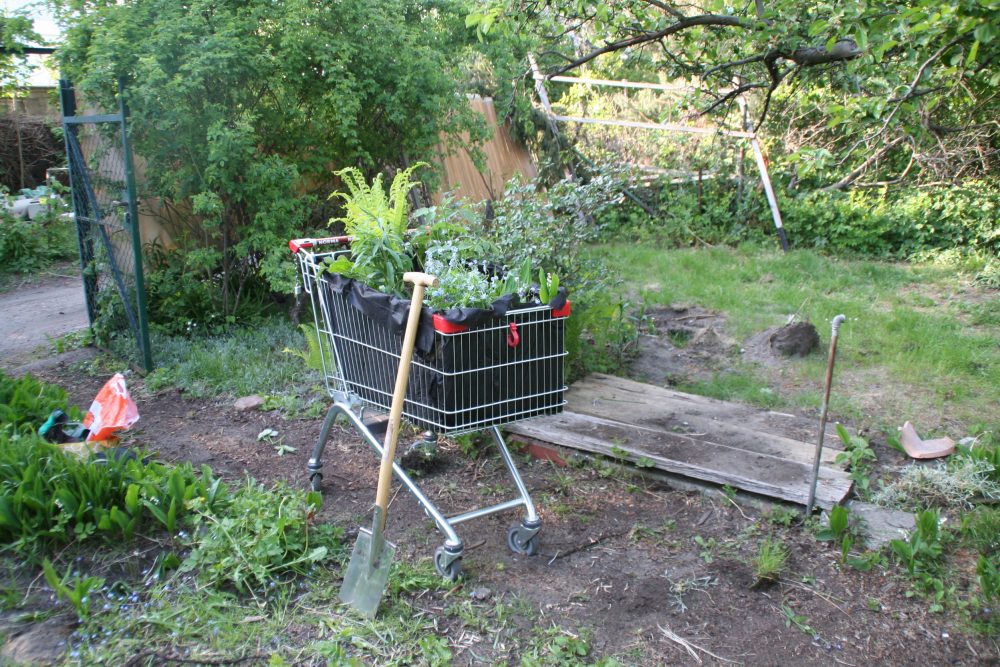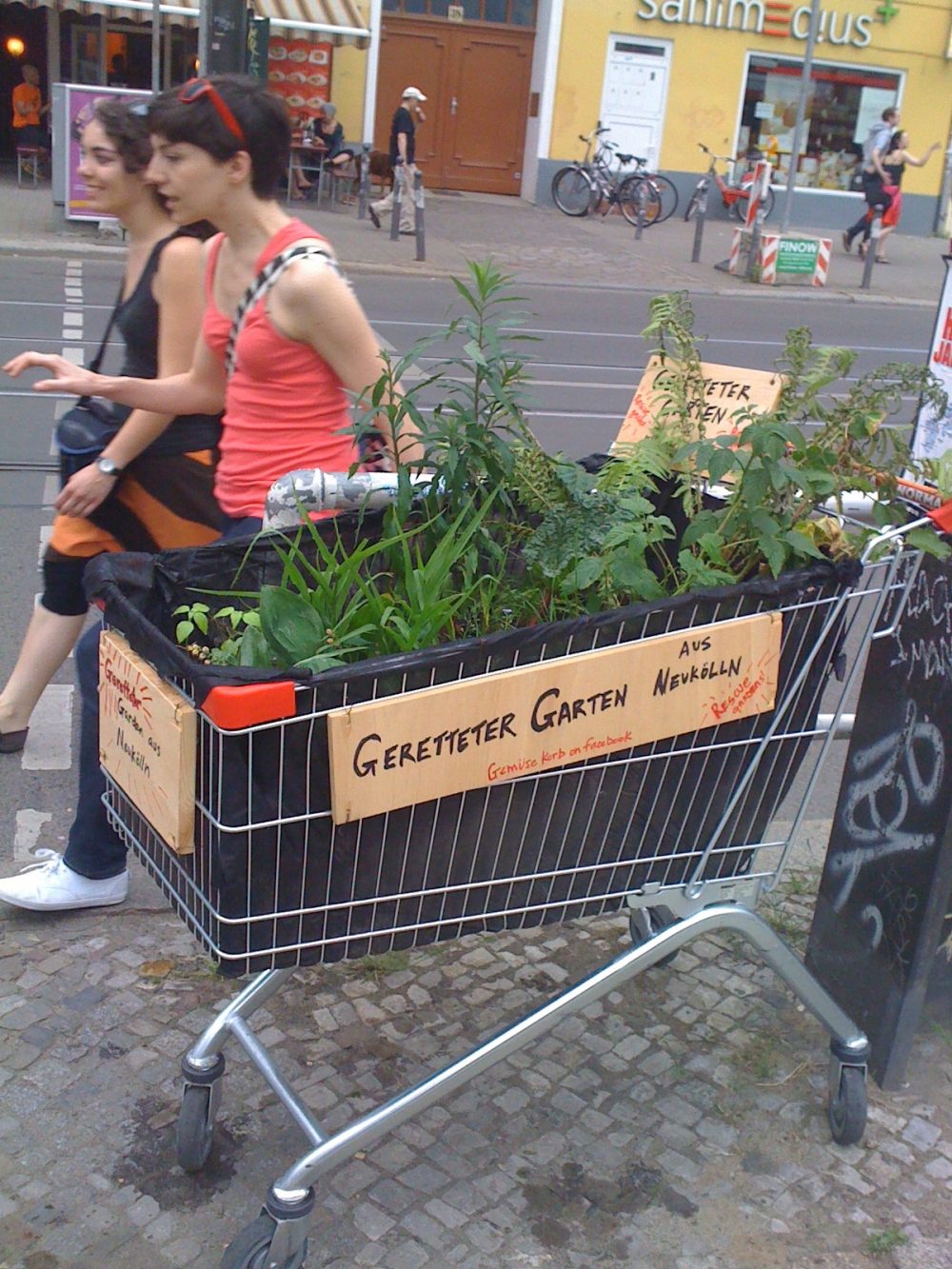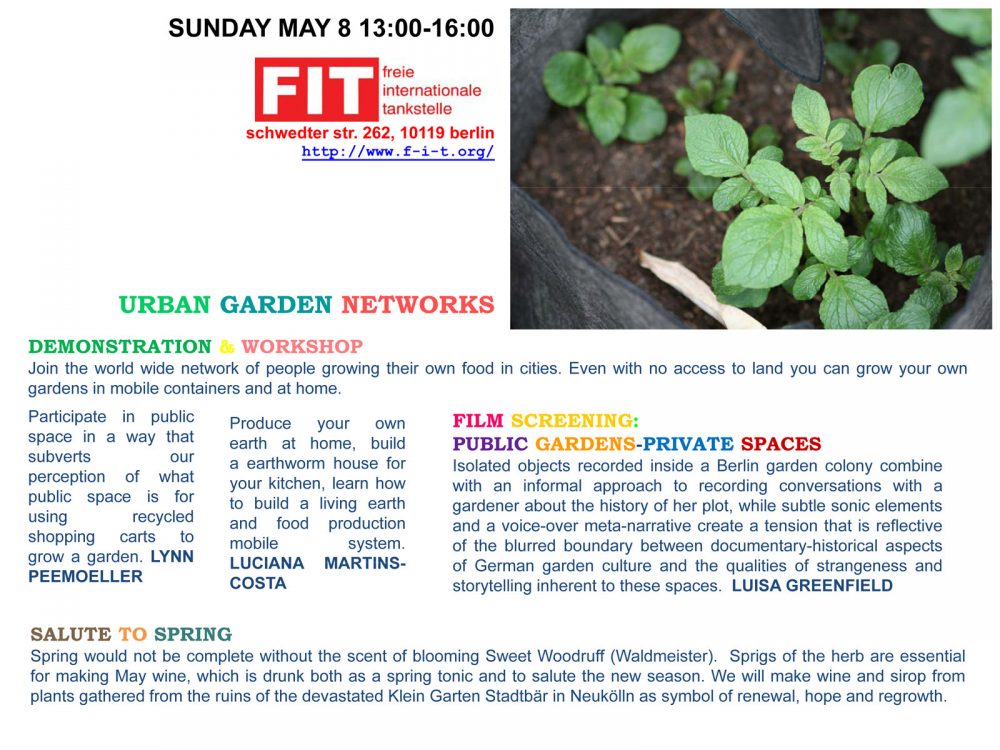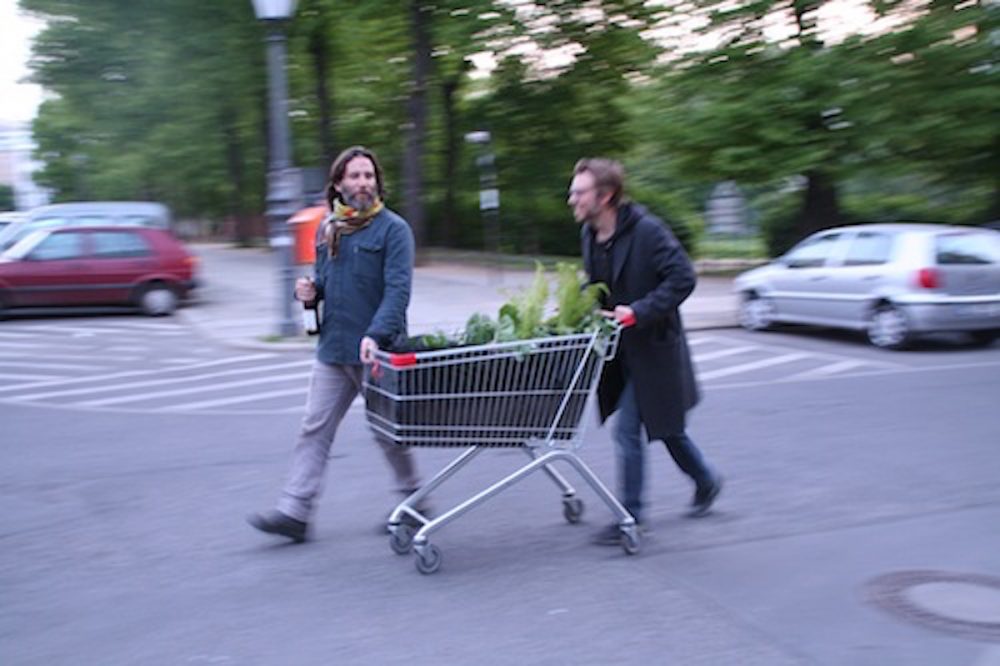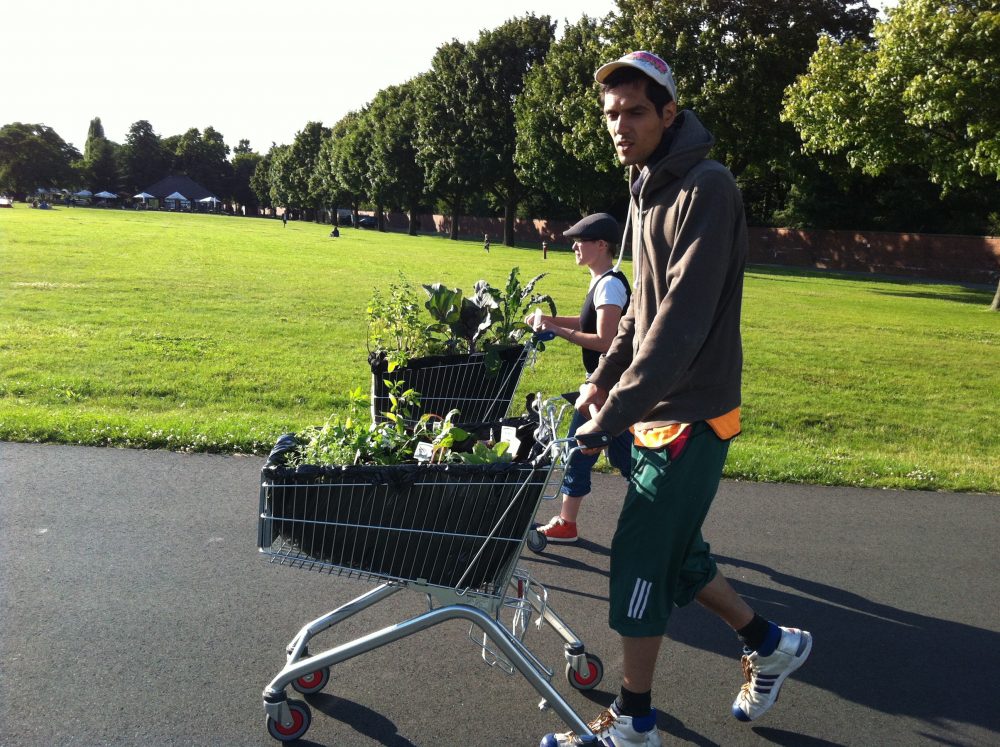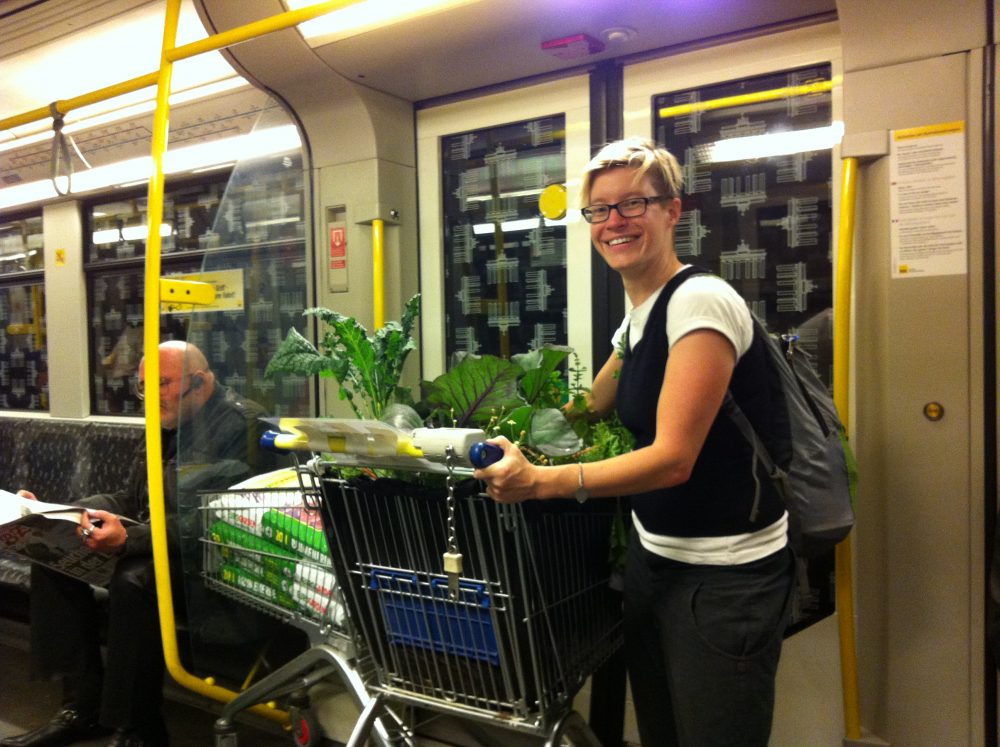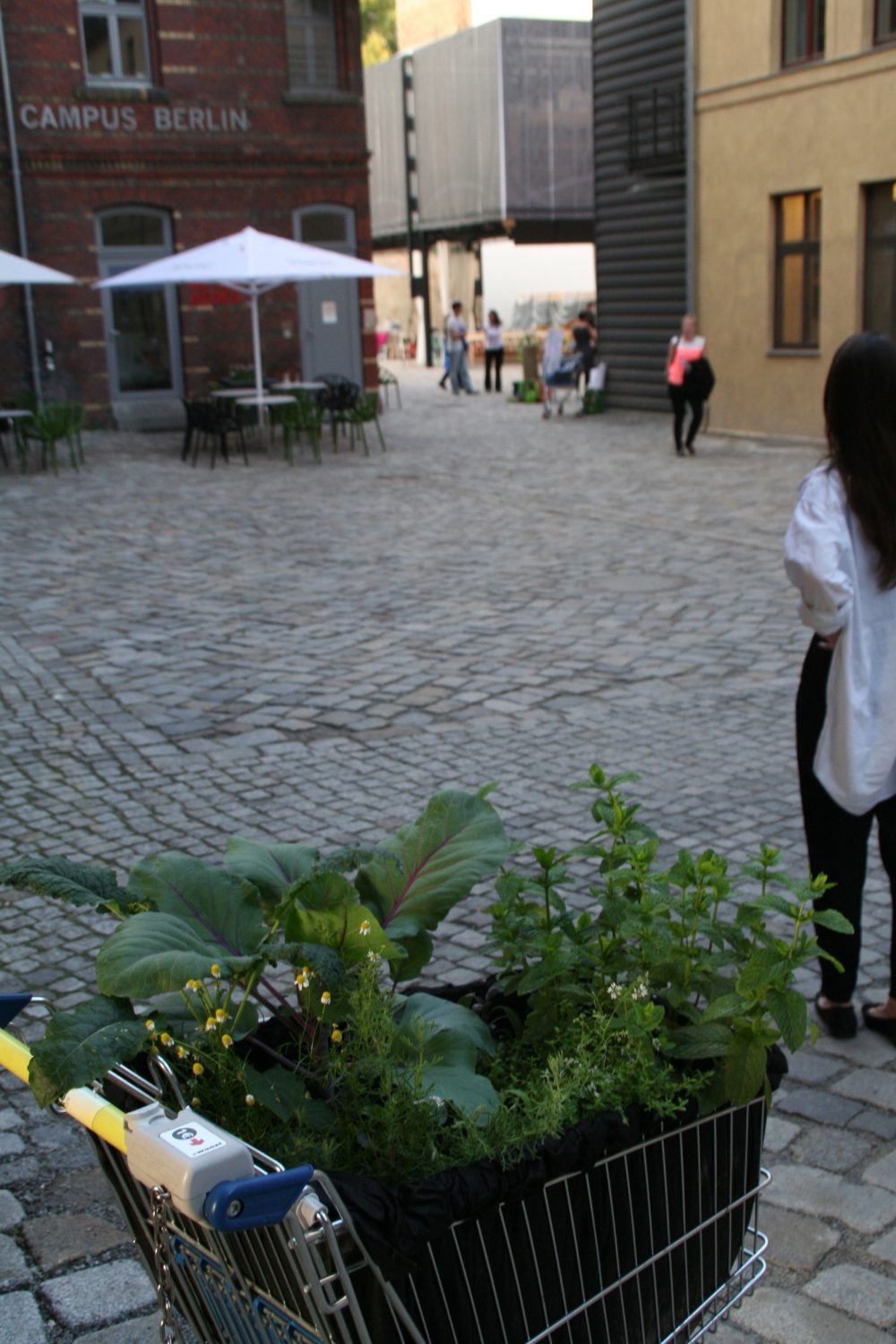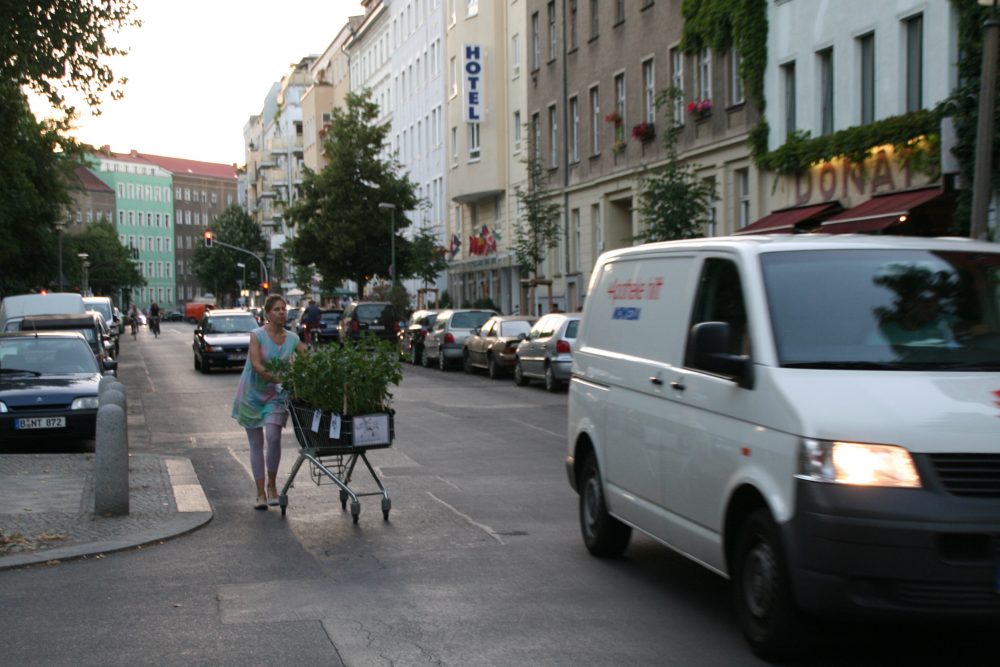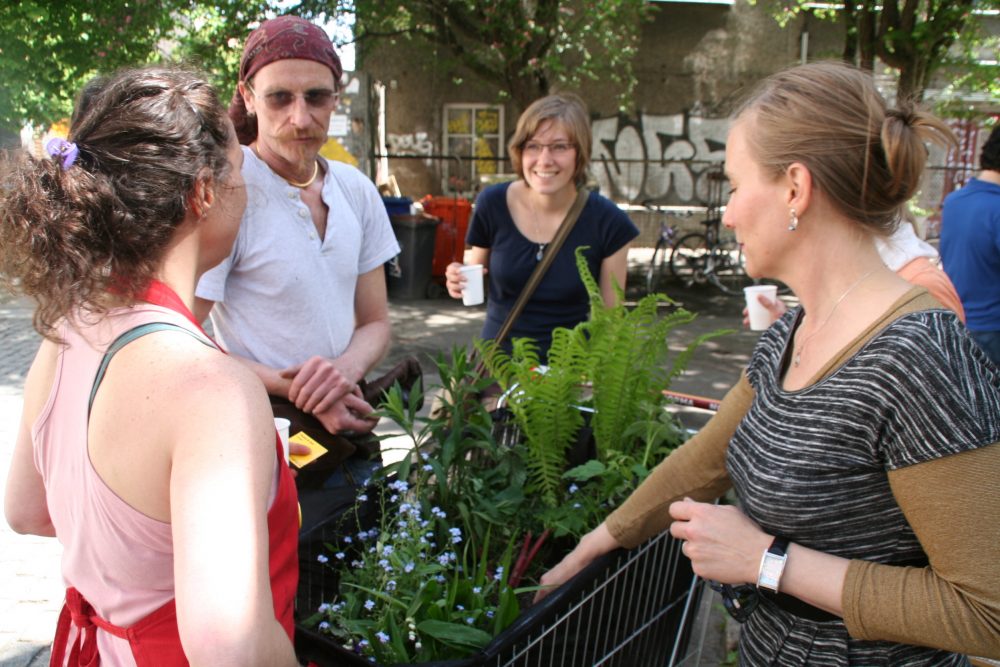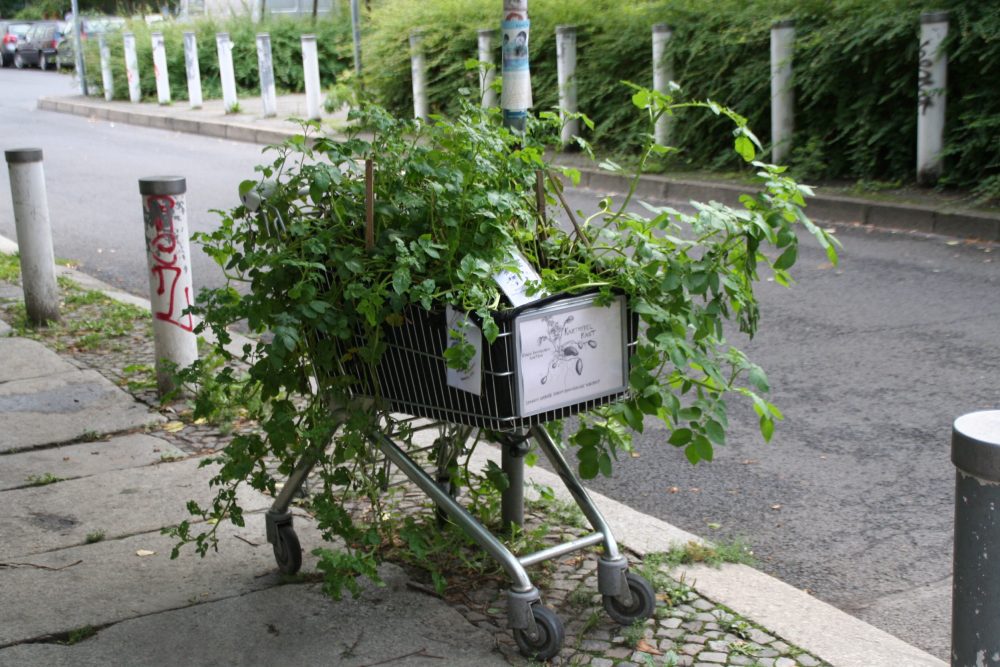
The Gemüse Korb (Vegetable Basket) project started in 2010 as a mobile garden made from abandoned grocery carts. Over 15 carts have been started throughout Berlin. The idea came from a quest to find urban land to grow a small vegetable garden. The compact mobility of a shopping cart is ideally sized for an urban garden and its form allows it to participate in public space in an unobtrusive way. Part private garden and part public education, the garden carts have grown a wide variety of plants for personal and public use. The initial two vegetable gardens focused on heirloom German varieties of potatoes, some having been cultivated for over 100 years. Since then, other old European vegetables grown have been featured like the Telltower Rübchen (a small yellow turnip regional to Berlin), head lettuces, radishes, carrots, pointy-headed cabbage, corn, beans, herbs, and flowers, mostly all grown from seed.
In 2011 a workshop was held at FIT (Freie International Tankstelle) to teach people how to make their own mobile shopping cart garden and care for it. Participants walked away with their own carts. Since then, information on how-to start your own garden and care for it has been publicly available on the website and through Facebook. Gemüse Korb has participated in 48 Stunden in Neukölln, Freie Universitat environmental day, Templehofer Allmende community garden project, Freie International Tankstelle Berlin (FIT), and has occupied many street corners throughout Berlin.
Many Gemüse Korb gardens have been challenged by the urban environment through vandalism and theft. While this is disappointing to the caretaker, it is an important part of the project to observe and how and why the urban environment reacts the way it does to the gardens. It increasingly demonstrates what is required to make a successful urban garden project, even on such a small scale; For example, good signage & communication, constant care and watering, trash removal, attractive plantings, securing the carts, timely harvesting, etc.
The Gemüse Korb project raises many provocative questions like: What relationship do the carts have to the streets they inhabit? Do they struggle to survive and are threatened by the urban environment or live in symbiosis with people and streets? Where do the carts thrive best? What plants grow best on the carts? How do we look at shopping carts differently when they are producing the food rather than just carrying it?
2011 Rescue Garden: I heard about a Klein garten colonie in Neukölln that was being disassembled in order to make way for the A100 highway, a long and ongoing urban development in the city of Berlin. Eminent domain over green spaces is certainly not a new thing, and especially in the rapidly developing world, it is sometimes a necessity. But I was especially curious and somewhat sad about the lost community of the garden colonie. There is something about tearing up a garden that tears up my heart. So I made two visits to the garden and built a mobile garden of rescued plants and soil from the colonie gardens. The new garden made its home on the other side of the city and symbolically represented the resistance and resilience of plants and gardens in the urban environment for over one year. During the early summer of 2012 as the perennial plants were starting to grow again, the garden was mysteriously stolen from its corner. The move was clearly planned, and further demonstrates the challenges and questions that raising a garden in an urban public space presents.
Berlin, 2012
